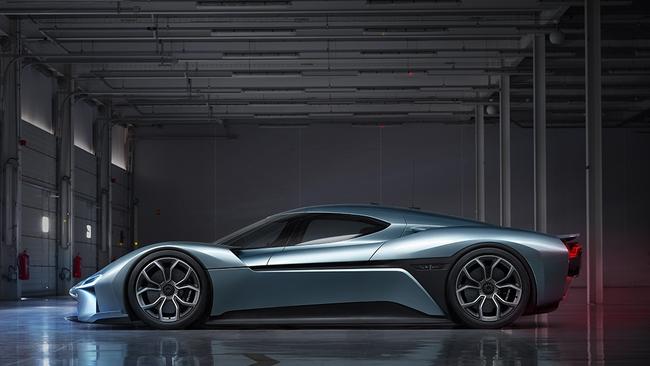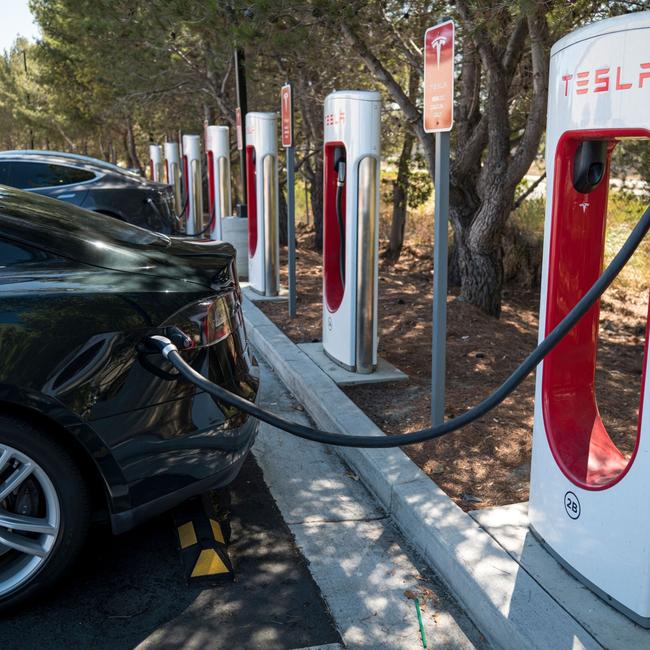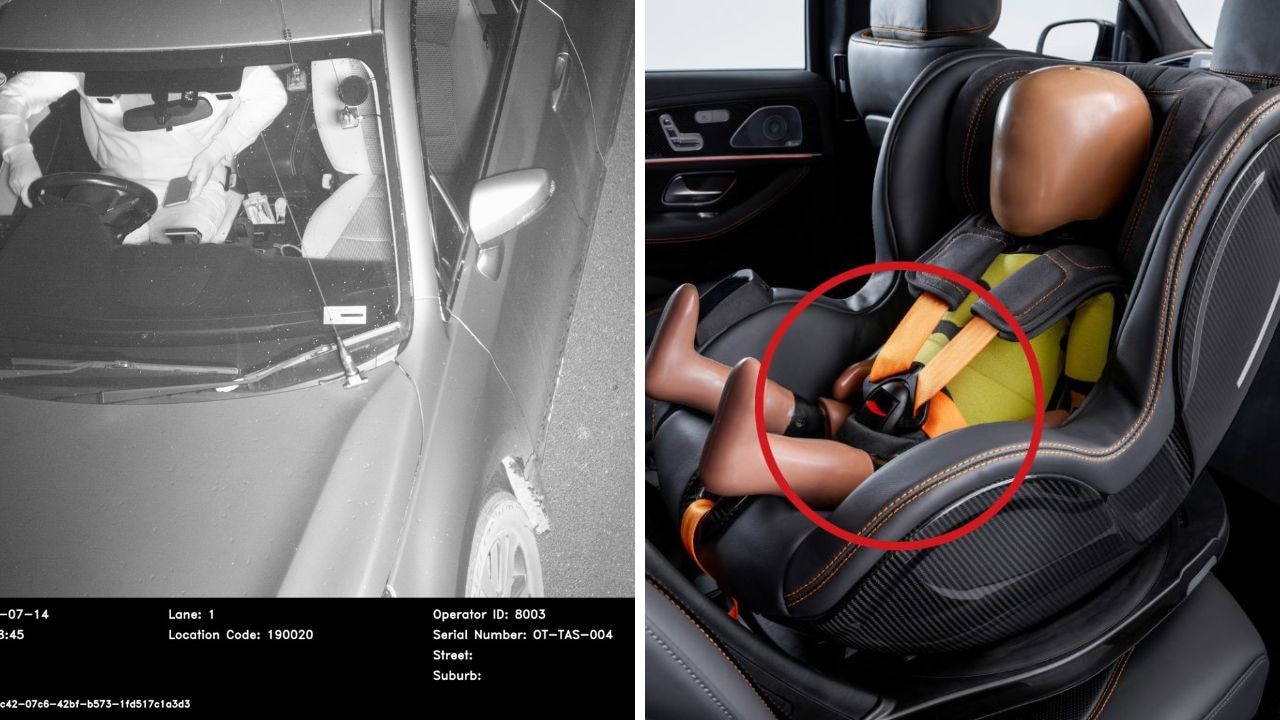Simon Bevilacqua: Tasmania’s electric vehicle advantage over the rest of Australia
Wake up, the future is already here, writes Simon Bevilacqua.
HiTech
Don't miss out on the headlines from HiTech. Followed categories will be added to My News.
ONE global industry has emerged unscathed from the economic ashes of the 2020 pandemic — production of electric vehicles.
In fact, the EV industry is bigger and stronger than it ever has been.
It is no surprise Tasmanian Premier Peter Gutwein and many Tasmanian municipalities are racing to get charging stations up and running.
In fact, the worrying part of all this is that this mad rush to EVs is still regarded by many Australians as futuristic and beyond the more urgent daily concerns of struggling to feed their families.
The reality is EVs are here and here to stay, and most of the world is already on the bandwagon.
The year of the pandemic has proved crucial in the global transition away from cars with internal combustion engines that run on fossil fuels to electric vehicles.
This transition is being backed by the governments of India and China, representing more than 2.5b people — that’s two potentially humungous EV markets.
Global investors are swarming to get in on the action. Elon Musk’s market-leading company Tesla went through the roof in 2020. Shares in the American firm rose more than 660pc, leaving it worth in the vicinity of a cool $650 billion.

Yes, some analysts have been concerned the Tesla hype in 2020 had created an almighty bubble that will inevitably burst. However, with Tesla vehicle sales soaring to the tune of about $7b a quarter and the company marching into the Indian and Chinese markets, the bubble is increasingly being seen as a fair reflection of rubber-to-the-road global demand.
China, perhaps the most fervent new player on the scene, is backing three new start-up companies — NIO, Xpeng and WM Motor — to haul in Tesla as the market flagship.
Egged on by their government’s audacious green energy targets, including that electric vehicles make up 20 per cent of car sales by 2025, and 50 per cent by 2035, the Chinese start-ups are seriously in the hunt.
To assist their rise to profitability, the Chinese start-ups are financially and technologically underwritten by e-commerce giant Alibaba, social media juggernaut Tencent and search engine Baidu — that’s quite some financial muscle, business know-how and technical nous from which to draw

The Chinese government expects this cross-fertilisation will eventuate in its three new EV players developing a hi-tech edge over Tesla.
As a result, the Chinese start-ups have surged in value to be ranked up with other experienced global car makers.
NIO — whose sleek EP9 model set a lap record at Nurburgring — is valued at a whopping $70b, more than General Motors or Ford.

This commitment from investors and governments, at a time when EVs represented just 3pc of cars on the road globally in 2020, tells an extraordinary story about confidence in global demand for EVs.
But it is hardly surprising, considering Prime Minister Boris Johnson announced in November that sales of new combustion-engine cars would end in Britain by 2030.
The writing is on the wall.
Swedish carmaker Volvo, already a market pacesetter with its highly successful XC40 Recharge, will unveil a new model to its range in March. Volvo Cars aims for its global sales to consist of 50 per cent fully electric cars by 2025, with the rest being hybrids.
BMW recently forecast that 20 per cent of its cars will be electric by 2023. The German luxury car maker is so bullish that over the next three years it intends to build a quarter of a million more EVs than initially planned.
Volkswagen recently announced it was refocusing on electric cars and would pour money into development in the next few years.
Tesla is to sell its Model 3 into India this year, after the Indian government reduced the GST on EVs and pledged to install 69,000 new charging stations.
The variety of approaches to design of the 21st century EV is remarkable.
Tesla’s Cybertruck, set for market release this year, looks like something from another planet in a Star Wars movie — its bizarre angular shape, including a ute-style tray, making even the Italian wedge auto-designs of the 1970s look somewhat conventional.
Ford’s Mustang Mach-E is a spectacular vehicle, infused with the machismo of the American muscle car, and its all-electric monster F-150 pick-up truck is straight out of the Deep South.
At the other end of the spectrum is Toyota’s new C+pod — a tiny two-seater, at only 2.5m long it is designed for zipping around cities and should be on the market for less than $20,000.
The epoch of the automobile, which began in the 20th century and enabled an unprecedented level of freedom of movement for the masses, looks likely to survive the global warming threat by giving consumers an alternative to the environmental destruction of fossil fuels.

PLUG IN TO THE GLOBAL E-CAR REVOLUTION
NO matter how fancy your electric vehicle is — whether a refined Tesla Model 3 or a macho Mach-E Mustang or a racy NIO EP9 — if you plug in to a dirty electricity network to recharge, you’re no better than the rest of us when it comes to greenhouse gas emissions.
And there’s the rub.
EVs are only as good as their power source.
If you plug an EV in to a network of energy generated by coal power stations, you might as well drive a smoky old 1978 Toyota 120Y.
That is why Tasmania has a big advantage over the rest of the nation — most of the time its network is supplying renewable energy from hydro dams.
Premier Peter Gutwein is to be applauded for setting a 2030 target for all government vehicles to be electric.
Leading by example is a sensible approach and, when the government’s e-fleet eventually goes on the market, it should assist in developing a market for second-hand EVs.
Mr Gutwein has also said Metro Tasmania will trial zero- emission buses, with a northern and southern trial under way within two years. These are all good ideas but in the context, and at the astronomical rate, of what is happening with EVs worldwide, it is small fry.
There are strong financial incentives for EVs in Europe and the US, but Australians pay full price. This adds to the damaging mythology that EVs are too dear and do not have the required range between charging for Aussie conditions.
Technology is advancing rapidly, prices are dropping, and ranges are comparable with fossil-fuel sedans.
My bet is a major car maker will come up with a vehicle like my first car, a VW Beetle — small, cheap, reliable and easy to drive. Germany’s Nazi leader Adolf Hitler came up with the idea for a “people’s car” in the late 1930s. Almost 100 years later and the Beetle is still being produced by VW, with almost 22 million made.
Originally published as Simon Bevilacqua: Tasmania’s electric vehicle advantage over the rest of Australia


